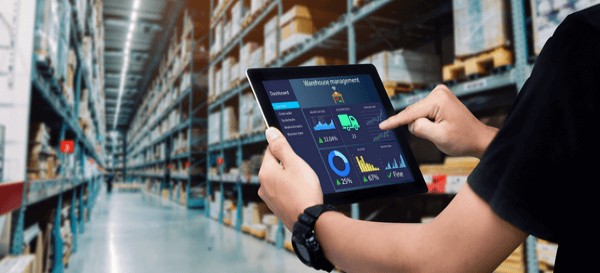Elevate the power of your work
Boka en GRATIS konsultation idag!
In order to respond to the evolving global supply chain, businesses of all types and sizes are being forced to develop or source alternate or novel logistics solutions to serve their customers.

“(Amidst) these unprecedented challenges, industrial and commercial companies are analysing their supply chains and searching for optimisation tactics and alternatives.“
“Global Logistics 2023: Supply Chains Under Pressure," Feb. 2, 2023, Logistics Management
Even as many of the pandemic-related disruptions subside, the global supply chain continues to struggle to keep pace with changing business needs paired with an evolving economic, political, and sustainability environment. Because of this, businesses of all types and sizes are being forced to develop or source alternate or novel logistics solutions to serve their customers.
Many organisations, however, continue to face roadblocks due to ineffective, costly, and sometimes outdated warehousing, fulfillment and other logistics networks which do little to effectively address changing market conditions. Companies who attempt to adapt solely through their in-house logistics networks and/ or traditional outsourced third party logistics (3PL) solutions often wind up with a fixed network that is slow to adapt and could be detrimental to growth.
"For many, just getting full transparency of all the links and vulnerabilities in their supply chain is a difficult task."1
“A large majority (of 800 senior U.S. decision makers) are reviewing their supply chains and considering a range of solutions to reduce complexity and risk, and boost resilience.1
According to Supply & Demand Chain Executive magazine, “there are several critical warehouse management and fulfillment challenges this year (facing organisations), including improving customer satisfaction levels (34%), investing in automation technology (31%), greater workforce efficiency (31%) and delivering goods-to-person faster (30%).” 2 These continued challenges come at a time when businesses also face uncertainty due to challenging market conditions and changing consumer demand.
While all industries are feeling the impact of the evolving supply chain space, all are facing different types of challenges.
Supply chain uncertainty has forced many retailers to increase their inventory levels in order to avoid stockouts, requiring investment in additional distribution capacity. Unfortunately changing consumer demand has left many with excess stock or space, both of which can negatively impact the bottom line.
Supply chain disruptions are leading many organisations to reevaluate their sourcing and/or manufacturing strategies. In fact, a recent survey shows that 83% of North American manufacturers are likely to re-shore production this year (Thomas Survey).
The pandemic overwhelmed the global healthcare industry and left many hospitals without the critical supplies that they needed to treat patients. Many organisations have responded by stocking up on critical supplies necessary for future emergencies, disasters, and other unforeseen events. These supplies take up valuable space and must be stored in the vicinity of the end-user location.
Demand for fast and frictionless delivery and returns — the ‘I want it now’ mentality — is pressuring ecommerce businesses to move fulfillment closer to their customer base, and place more emphasis on speed, diverse order-handling capabilities, and final-mile delivery.
There is, however, a new emerging concept for outsourced logistics — warehousing as a service (WaaS) — that is helping to solve these and other warehousing, fulfillment, and other supply chain related challenges. WaaS does not involve long-term contracts that often accompany traditional 3PL services nor does it require owning or operating one’s own infrastructure.
Outsourcing warehousing, fulfillment, and other logistics needs provides organisations with the ability to focus on their core business competencies while avoiding many of the headaches of owning and operating their own - namely high costs, resource drain, capacity constraints, and risk.
WaaS is a unique concept for outsourcing logistics, offering full-service warehouses in key regional locations to provide on-demand solutions like storage, fulfillment, container unloading, and kitting. Unlike large, rigid 3PL service providers which require a sizeable up-front contract commitment, WaaS solutions are nimble, agile, and designed to support evolving needs like seasonal spikes, temporary overflow needs, and new product introductions.
| Traditional 3PL | Owned / operated | WaaS | |
| Responsiveness | Low | Low | High |
| Flexibility | No, usually rigid, long-term contracts, fixed offerings | No, costly real estate, high overhead | Yes, very flexible month-to-month contracts and customised solutions |
| CapEx/OpEx | Low upfront CAPEX, fixed OPEX | High upfront investment for real estate, facility, and other resources | Minimal OpEx due to subscription based engagements |
Leading WaaS providers tend to offer flexible contracts, subscription based pricing, quick onboarding, and a cloud-based warehouse management system (WMS) that allows direct end-user system integration for real-time visibility and tracking.
Customers have access an on-demand warehouse with labor resources as needed, with the ability to quickly scale resources up or down. WaaS solutions often include value-added services such as cross-docking, packaging, container unloading, and disposal/destruction.
WaaS providers can customise a unique solution for each customer to fit their very specific and timely needs.
WaaS warehouses are often located in key logistics markets, central to ports and population centers.
The business case is clear, however the future of the economy or the supply chain is not. Now is not the time to lock yourself into costly, long-term contracts as your needs and customer demands are likely to fluctuate in the future. You need flexibility, nimbleness, and on-demand warehousing and logistics solutions that free up your in-house resources and capital, allowing them to focus on the business.
Now is the time to assess your current and future fulfillment needs and decide if your current solution is dynamic enough to support your ever-changing business and supply chain environment.
Boka en GRATIS konsultation idag!


